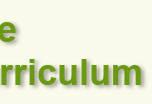|
MAC3 and Sustainability
Modeling Atmospheric CO2 Data
The buildup of carbon dioxide in Earth’s atmosphere as a result of human industrial and agricultural activities is amplifying the planet’s natural greenhouse effect and producing global climate change. Data on global atmospheric CO2 has been collected since 1958 when Charles Keeling began sampling and recording the data from the Mauna Loa Observatory in Hawaii. The data show a variety of cyclical features, but the most profound is the consistent rise in concentrations. From a mathematical point of view, the question arises as to how well the data can be matched to a particular function. From both a mathematical and a scientific point of view, regression analysis of the data could suggest how the future of CO2 concentrations may appear. In this activity, students will use actual CO2 data from the Mauna Loa Observatory in Hawaii to create their own “Keeling Curve”; conduct an analysis of the data; and, attempt to match it to a mathematical function. They will then use the function to predict increases in CO2, both historical and future.
Developing a Transportation Survey to Estimate Gasoline Use by Campus Commuters
Through this activity, students in a liberal arts mathematics class will develop experience with real-world statistical concepts through the context of sustainability: estimation, survey writing, sampling techniques, and data analysis.
Estimating Greenhouse Gas Offsets as Part of Shoreline Community College’s Greenhouse Gas Inventory
This is a service-learning project for students in Geography 204 (Weather, Climate and Ecosystems). Students will assess prior estimates of carbon offsets associated with plant and soil biomass on their college campus; and as a result, they will understand the complexity of measuring the complex sources of carbon emissions and offsets; address the challenges of coordinating data collection and field measurement; and realize importance of estimation in public policy contexts.
The Carbon Dioxide Challenge - How Many Plants Make a Future?
The story of Biosphere 2 is introduced to the students in the context of a discussion of the carbon cycle, climate change, and CO2 accumulation in the atmosphere. The lab activity focuses on the role of photosynthesis in a sustainable future. Students explore the effect of photosynthesis and respiration in one liter ‘closed systems’ containing plankton, marine plants, and fish. By calculating carbon dioxide uptake and production in these systems, students predict a plant: animal ratio sufficient to maintain a system in carbon dioxide ‘balance’ for one hour. Building and testing the system, then extending it to a longer time period, demonstrates to the students that carbon dioxide accumulation, even in a simple system for a short time period, is not a trivial matter. Students apply concepts from biology, solution chemistry, and exercise considerable quantitative reasoning from real data as they design and fine-tune their systems.
Ocean Acidification and the Effect on Sea Shells - Sally Salivates Seashells by the Seashore
A teaching-and-learning activity reviewing acids and bases and looking at the impact of acid on shells. Climate change is an important and complex topic. Multiple consequences including warmer weather are still being evaluated. One recent impact is increased acidification of the ocean and its impact on marine life. In this lesson we review “Acids and Bases” taught in a previous lesson and, through a scientific method, will look at the impact of an acid on different types of shells.
This is an activity for teachers working with students in 6-8th grades in the subject(s) of oceanography & marine biology.
Clothes Washers life cycle - Cost and environmental performance
the cross-disciplinary approach used by two groups of students from Everett Community College working together in order to numerically evaluate and compare the cost and environmental performance of different clothes washers in the market. The two classes involved were Intermediate Algebra and Green Purchasing.
Your Environmental Impact
To help students discover their own environmental impact and its costs and, as well, to help students develop their basic mathematics fluency by providing a number of personally relevant and important problems. The individual assignments build understanding of personal water use, sewage, waste generation and disposal, pollution sources and impacts, and energy use and costs.
Mapping The Socio-Culturally Sustainable Classroom
In this multi-day, student-centered, active learning assignment; students will use mathematical ideas to view the classroom as one component of a larger closed and sustainable system. Students will construct a spatially accurate concept map depicting the socio-cultural relationships and systems within classrooms and locate the teaching role within a layered, multifaceted and ideally sustainable system. Students and faculty will assess student learning by pre and post tests with the first and final draft of the group-generated concept maps and written metacognitive self-reflection. Mathematical components include scale, spatial and proportional reasoning, set theory, and Venn diagrams. At the culmination of the lesson, students will engage in a metacognitive activity and develop a concept map of the multi- day lesson.
Sound Science
The curriculum and activities we are planning for a math/biology linked learning community will give students the opportunity to make a connection to real activities outside the classroom. In our shared activities, “Sound Science,” students will engage in meaningful "active learning" during "lecture" time as opposed to the passive learning of listening to a lecture and taking notes.
|









